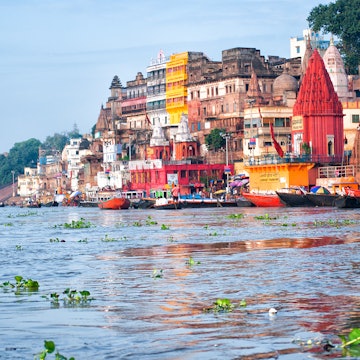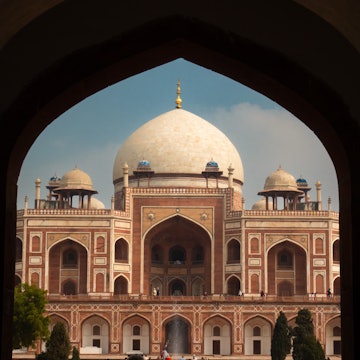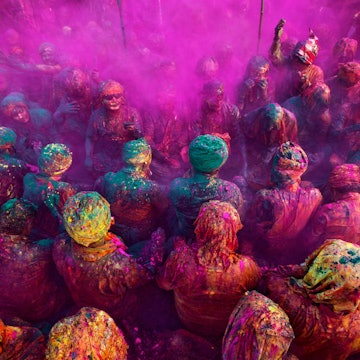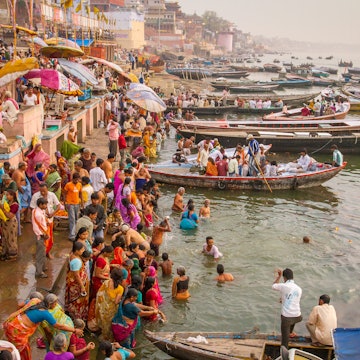
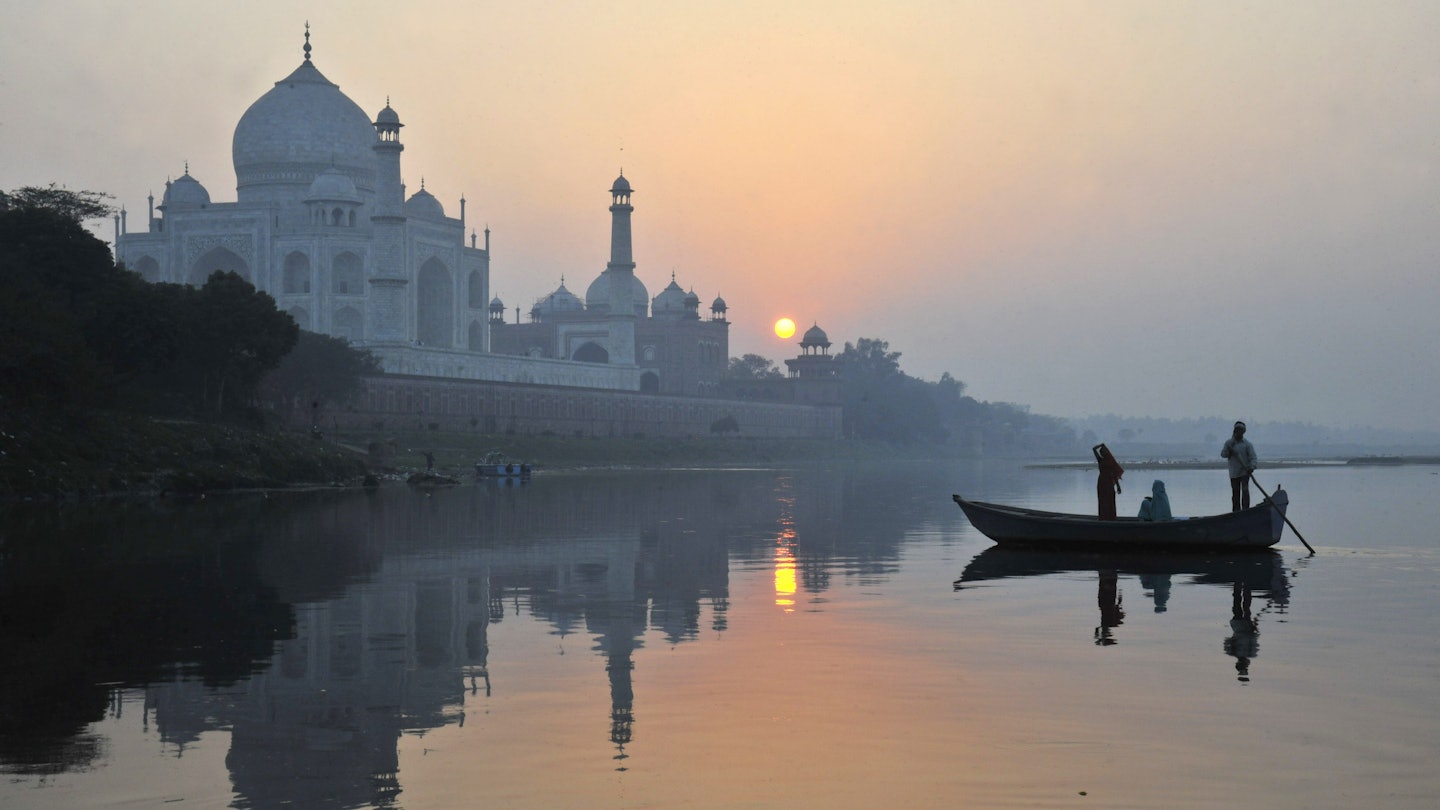
On both sides of the Yamuna River, Agra has treasures beyond the Taj Mahal. Pete Seaward/Lonely Planet
Everyone comes to Agra for the Taj Mahal, and rightly so. It’s every bit as majestic as you’ve heard. But once you’ve gazed at its white marble perfection, what’s next? That’s where Agra gets even more interesting. From bustling markets and Mughal-era marvels to riverfront gardens and lesser-known tombs steeped in history, there’s more to this city than just its world-famous icon. Whether you’re a foodie or a history buff or you’re just looking to get off the typical tourist trail, Agra has surprises waiting.
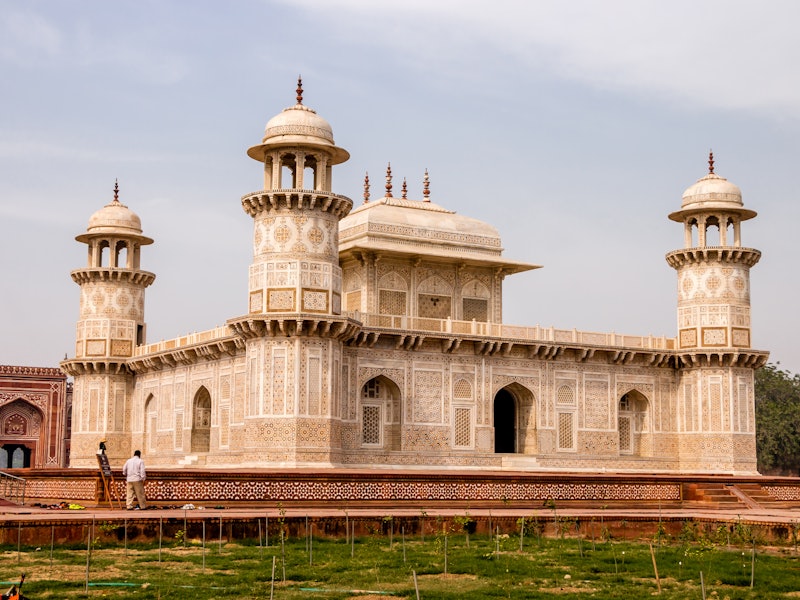
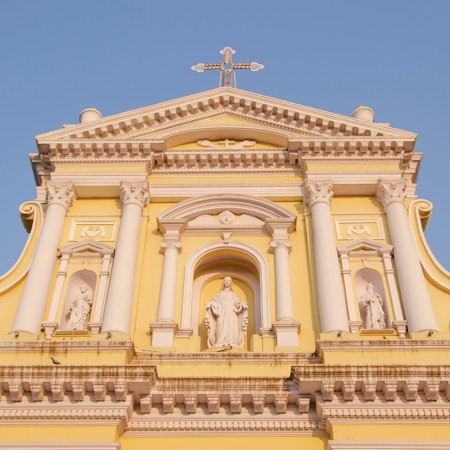
Take in the other attractions of the old city
Less than a mile (1.3km) from the Taj stands one of the most impressive Mughal forts in India. Emperor Akbar started building the red sandstone Agra Fort in 1565, to which his grandson Shah Jahan made many marble additions and converted it into a palace. Admire the fort’s long defensive wall and the once crocodile-filled moat, then enter through the Amar Singh Gate. Inside, you will be awestruck by the magnificent architecture of Jahangir Palace, Khas Mahal, the wooden Diwan-i-Khas and the mirror-adorned Sheesh Mahal.
About 5km (3 miles) from the fort, across the Yamuna River, visit the exquisite Itimad-ud-Daulah. Emperor Jahangir's wife, Nur Jahan, built this tomb for her father, Mirza Ghiyas Beg, in the 1620s. Nicknamed Baby Taj, this all-marble edifice with delicate lattice and extensive marble inlay work served as an inspiration to Shah Jahan to build the Taj Mahal. Further along the river stands Chini-ka-Rauza, the Persian-style tomb of Afzal Khan, a poet who served as Shah Jahan’s chief minister. This rarely visited monument boasts beautiful glazed tiles on its facade and brightly painted walls and ceilings inside. End your exploration at Mehtab Bagh, an exquisite riverside garden originally built by Emperor Babur. It’s the perfect place from which to view the Taj Mahal, particularly at sunset.
Another must-see spot is Akbar’s Church in the Civil Lines area of Agra. Built in 1600 by Jesuit priests invited by Akbar, this was the first Roman Catholic Church in the Mughal Empire. The current building dates to 1769 and features a combination of Mughal, French and Portuguese architectural styles.
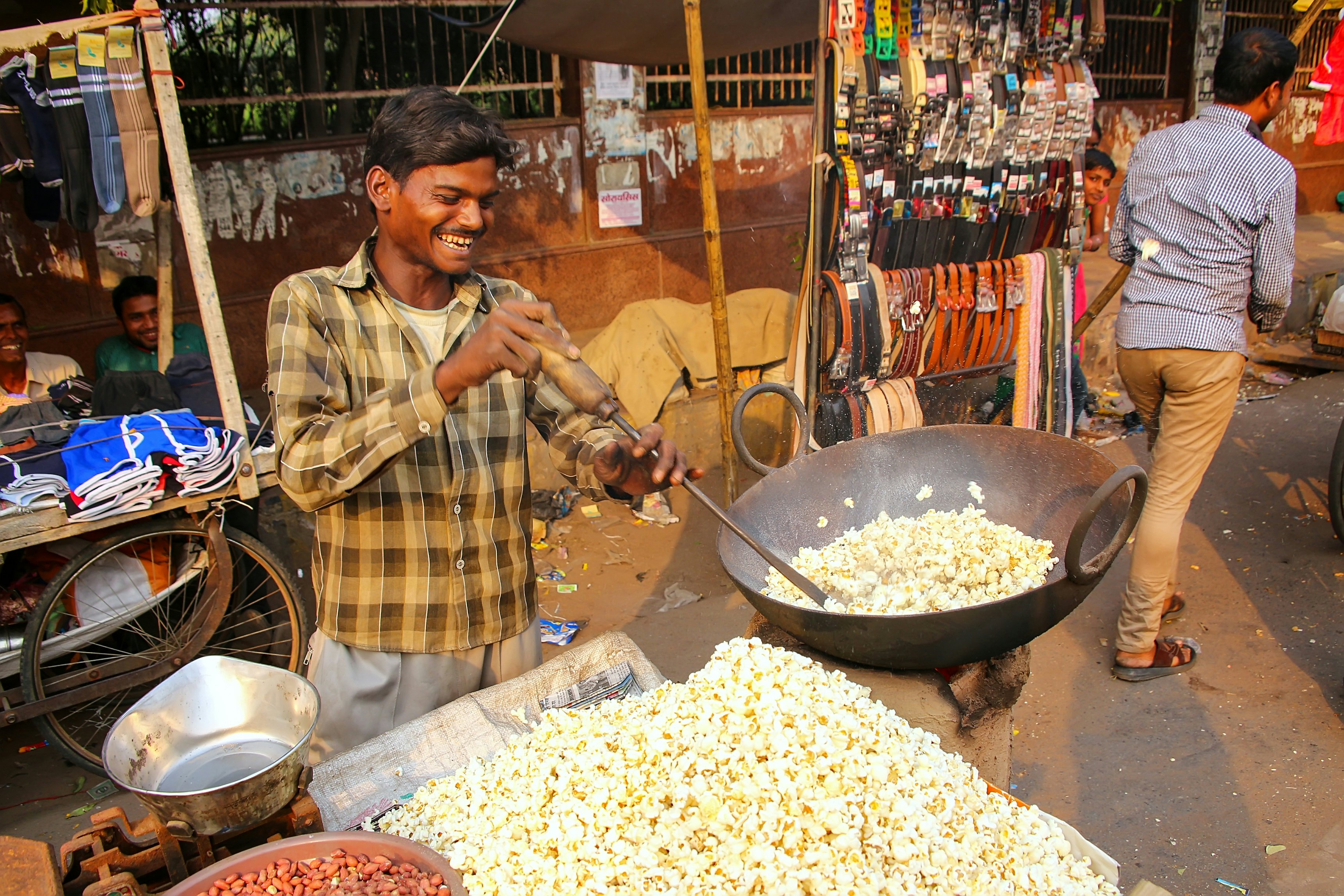
Trawl the markets for souvenirs and spices
Agra’s chaotic markets are a must-visit whether you’re looking for fabrics, shoes, jewelry, handicrafts or spices. The most famous one is Kinari Bazaar, behind the Jama Masjid mosque. There you will find everything from clothes to jewelry to marble artifacts. Sadar Bazaar in the Cantonment area is the best place to buy leather goods, while Shah Market in Civil Lines is chockablock with electronics shops. Even if you don’t buy anything, the sheer energy of the markets is contagious — just watch out for the scooters, rickshaws and handcarts as you navigate the streets.
Watch artisans at work in their ateliers
The craftsmanship of the Taj Mahal is unparalleled, and it took thousands of artisans nearly a decade to complete. Its marble inlay work is particularly eye-catching and a perfect example of high Mughal art. The technique — known as pietra dura in Italian and parchinkari on the subcontinent — involves cutting, polishing and fitting colored semiprecious stones into marble to create stunning floral motifs and calligraphic patterns. This is by no means a dead art; all over Agra, you will find artisans still practicing it to create tabletops, plates, boxes, coasters and souvenirs. At New Nice Marble Art & Handicrafts in Tajganj, you can watch the 17th-generation descendants of the Taj Mahal artisans at work and perhaps pick up a marble inlaid model of the Taj, a flower vase or even a handmade chessboard. A short drive away, drop by Universal Gems and Handicraft Gallery to see how the traditional Agra handicraft of zardozi (metal thread) embroidery is done. Once used to embellish royal vestments, the craft now adorns everything from saris and stoles to accessories and wall hangings.
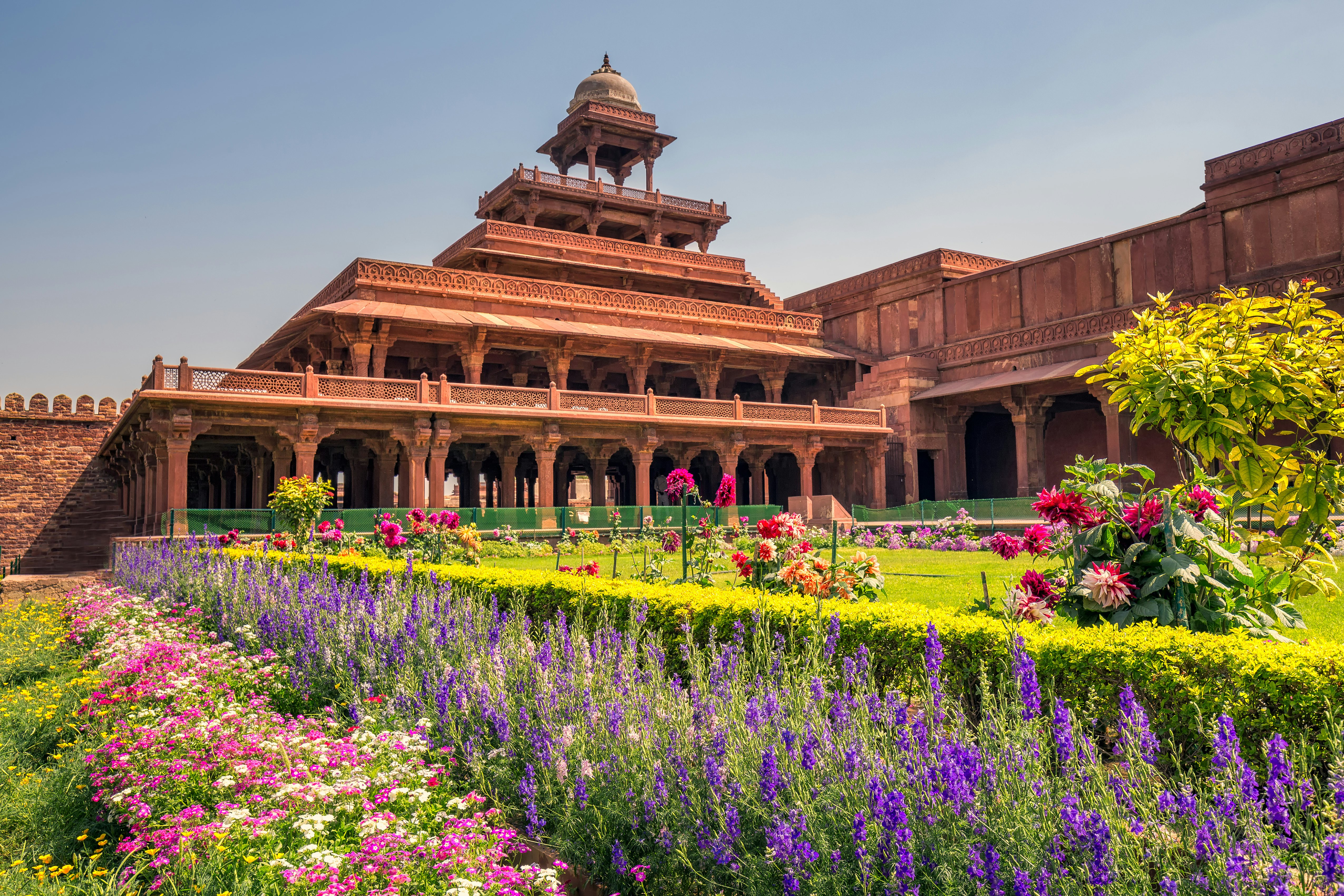
Take a detour to the abandoned capital of Emperor Akbar
Just 40km (25 miles) from Agra, Fatehpur Sikri is a beautifully preserved ghost city that was once the Mughal capital under Emperor Akbar. Built in the late 16th century, it was abandoned shortly after, most likely due to a shortage of water. What remains is one of the most atmospheric and architecturally rich sites in India. Begin at Buland Darwaza at the entrance to Jama Masjid; this extraordinary carved gate is said to be one of the highest gateways in the world. Behind it is the serene white marble tomb of the Sufi saint Salim Chishti, who is believed to grant wishes. The largest palace in the complex is Jodha Bai Mahal, built for Akbar’s favorite wife, Mariam-uz-Zamani. The five-storied Panch Mahal, with its gradually diminishing tiers, is also quite stunning. If you’re so inclined, there’s a free archaeological museum near one of the entry gates.
Go on a culinary journey — from street fare to fine dining
Agra’s food scene is legendary, and you’d be remiss not to try some of its signature dishes. Begin with the traditional breakfast of bedai (masala puri served with spicy potato gravy) at Deviram’s on MG Road. For a hearty local meal, tuck into mughlai fare like kebabs, korma and biryani at Pinch of Spice (outlets in Tajganj and Civil Lines) or at tiny street stalls in Sadar Bazaar. This market is also known for its famous chaat shops like Agra Chaat House, Shri Agarwal Chaat House and Pandit Ji Chaat Bhandar; try dishes like bhalla (spiced potato patty served with chickpea curry and chutney), dahi pakodi (deep-fried lentil fritters in sweetened yogurt), golgappe (hollow puri with fillings and flavored water) and papdi chaat (fried dough wafers topped with potatoes, chickpeas, yogurt and sweet and spicy chutneys).
If you’re looking for fine dining, there’s Peshawri at ITC Mughal, which is known for its North Indian cuisine, and Esphahan at The Oberoi Amarvilas, which has fantastic Mughlai fare. Daawat-E-Nawab at the Taj Hotel & Convention Centre Agra offers standard Mughlai dishes, lost recipes of Uttar Pradesh and a sumptuous thali presentation, all presented on specially crafted kansa dinnerware (made with bell metal or bronze). Live music accompanies your meal.
You can’t leave Agra without trying its signature sweet petha, which is made by soaking chunks of ash gourd or white pumpkin in lime water and then cooking them in sugar syrup. This soft translucent candy can come in a variety of flavors like saffron, mango, coconut and even paan. Panchhi Petha is the most well-known and ubiquitous petha shop (with multiple locations), but locals recommend going to Munna Lal Agarwal Petha Wale in Rawatpara or one of the two Gopal Das Pethe Wale shops.

Get a local’s perspective on the city’s culture and heritage
Dive deeper into the city’s rich history and culture with Agra Heritage Walks. Led by passionate local artists and storytellers, these guided tours go beyond the Taj Mahal, revealing Agra’s hidden gems and vibrant traditions. Each walk is thoughtfully curated to foster meaningful connections between you and the local community, promoting sustainable and purpose-driven tourism. Embark on a food trail or a handicraft walk or sign up for themed walks to learn about the princesses of the Mughal empire or perhaps the poets of Agra. Whether you’re a history enthusiast, art lover or curious explorer, Agra Heritage Walks provides a unique perspective on the city’s enduring legacy.








